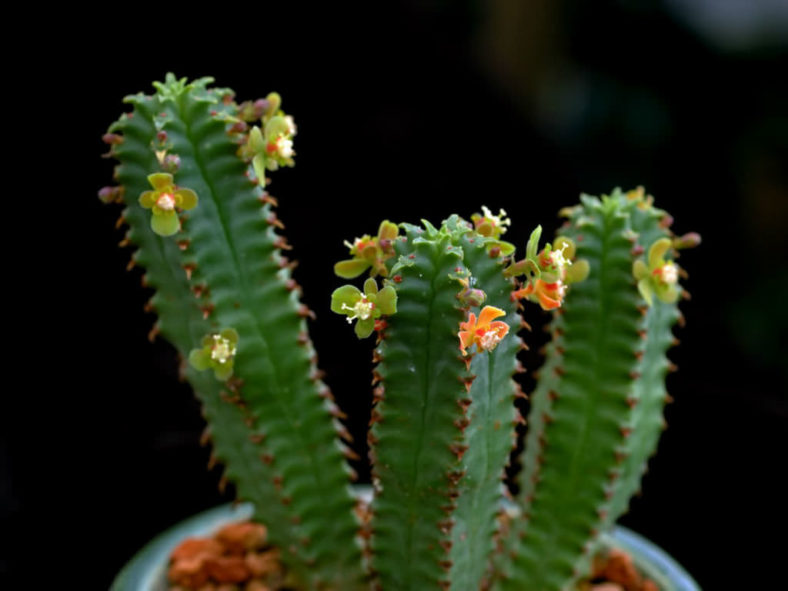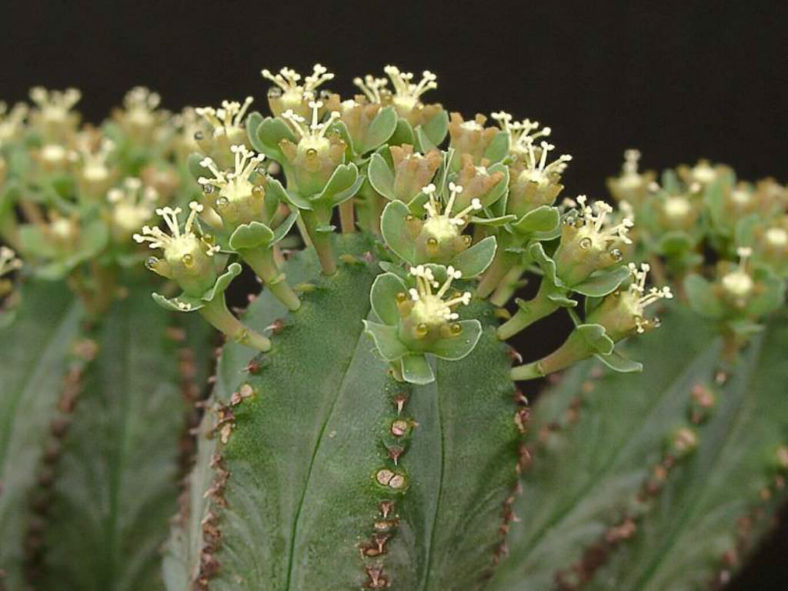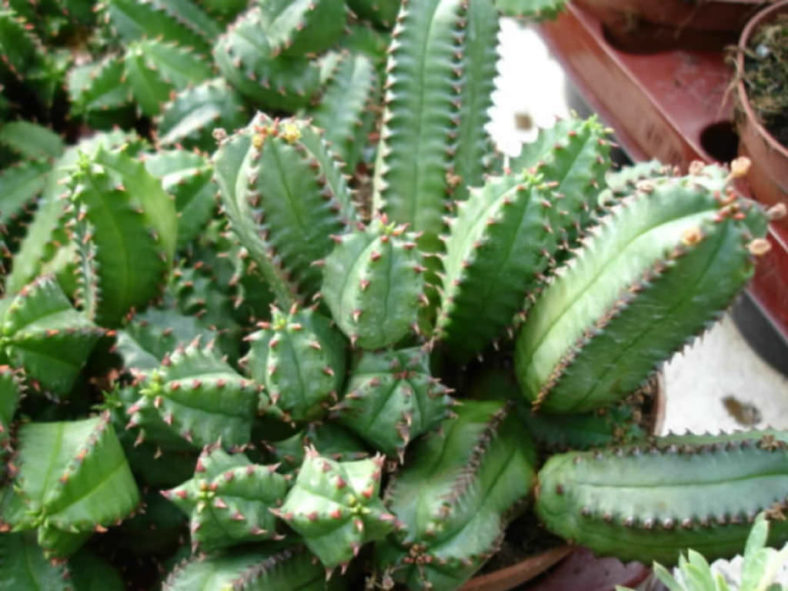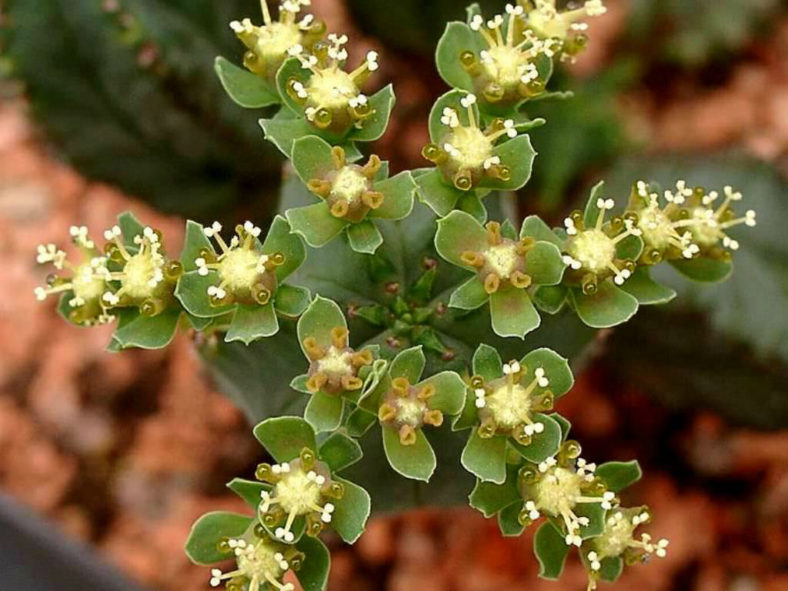Scientific Name
Euphorbia tubiglans Marloth ex R.A.Dyer
Scientific Classification
Family: Euphorbiaceae
Subfamily: Euphorbioideae
Tribe: Euphorbieae
Subtribe: Euphorbiinae
Genus: Euphorbia
Origin
Euphorbia tubiglans is native to South Africa. It occurs in the Eastern Cape and Western Cape in open karroid shrubland, on stony slopes, flats, and in loose sandy soils under small shrubs, or wedged among stones.
Description
Euphorbia tubiglans is a dwarf succulent with a thick, fleshy rootstock from which arise 2 to 5 upright, unbranched, glaucous branches with 5 to 6 ribs lined with small tubercles. The caudex can reach a height of up to 3.4 inches (8.5 cm) and a diameter of 1.8 inches (4.5 cm). The branches can grow up to 3.2 inches (8 cm) long, often longer in cultivation, and 0.9 inches (2.2 cm) in diameter.
The flowers are unisexual, with male and female cyathia on separate plants, and are green, more or less tinged with yellow or red. They appear near the apex of the branches in spring and summer. The nectar-bearing glands are red, contrasting with the white involucres, and form a tube, hence the specific epithet.

Hardiness
USDA hardiness zones 10a to 11b: from 30°F (-1.1°C) to 50°F (10°C).
How to Grow and Care
Euphorbias are very easy to care for. These plants require a little pampering to become established, but once they are, they are self-sufficient. More die from overcare and watering than from neglect. Euphorbias need well-draining soil and ample sunlight. They are not particular about soil pH but cannot tolerate wet soil. Unlike most succulents, Euphorbia does not handle long periods of drought well. It may need weekly watering during the summer. Water whenever the top several inches of the soil are dry. Water deeply, but avoid letting them sit in wet soil, as this can cause root rot. Add some organic matter or fertilizer to the planting hole. If you are growing them in containers or your soil is poor, feed them with a half-strength fertilizer monthly.
These succulents can be grown from seed, but they can be difficult to germinate (or even find). They are usually propagated by cuttings. This can be tricky because of the exuding sap. Rooting hormone is recommended with Euphorbias. They tend to grow problem-free, but there are a few pests and diseases to be alert for.
Learn more at How to Grow and Care for Euphorbia.
Forms
Links
- Back to genus Euphorbia
- Succupedia: Browse succulents by Scientific Name, Common Name, Genus, Family, USDA Hardiness Zone, Origin, or cacti by Genus
Photo Gallery
Click on a photo to see a larger version.


